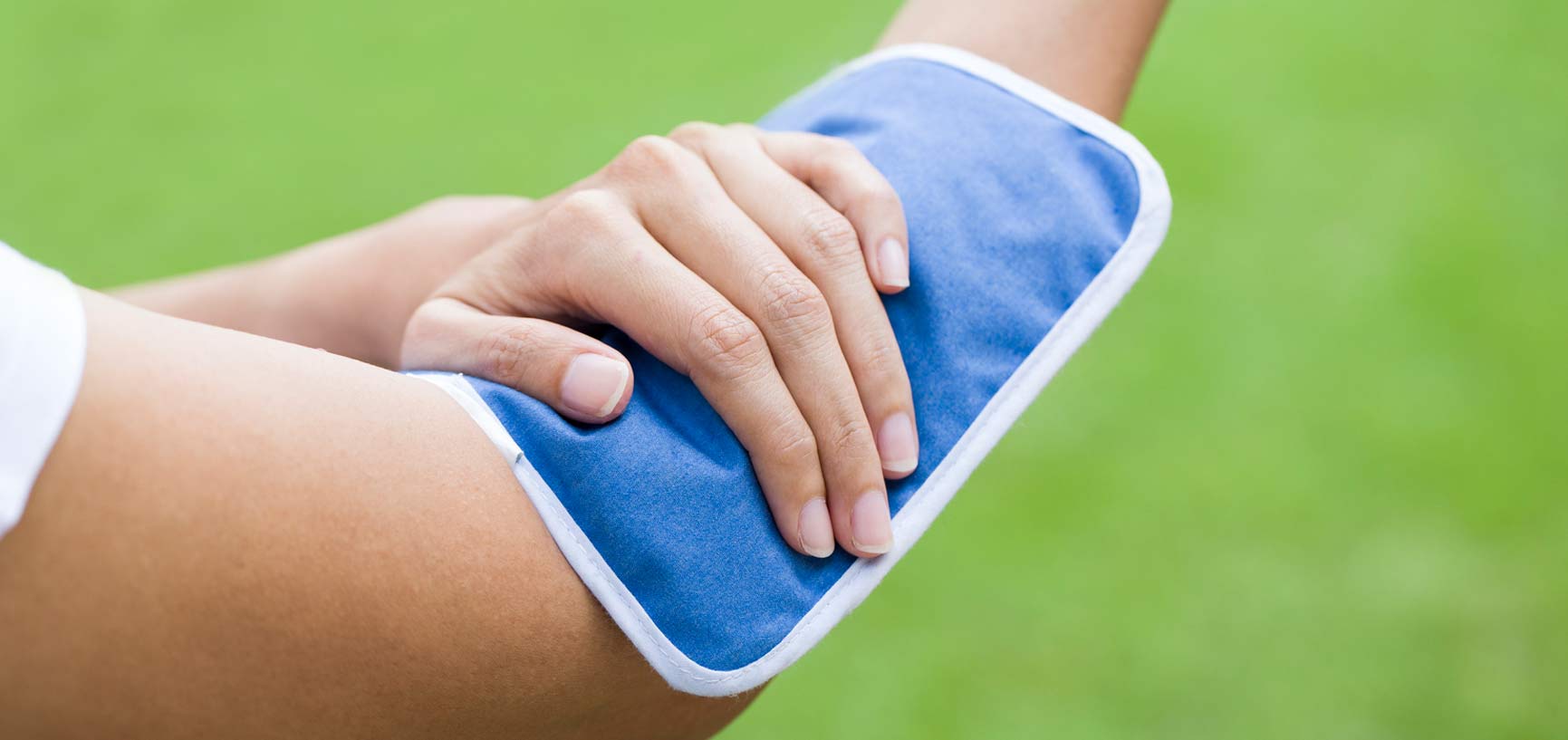It is a shame that there is so much mixed information about the issue of whether to ice vs. heat because therapeutic icing and heating — cryotherapy and thermotherapy — are rational, cheap self-treatment options with minimal risks. Both heat and cold can help reduce pain. However, it can be confusing to decide which is more appropriate at any given time. Basically, ice is for injuries, and heat is for muscles. Cold is appropriate for acute pain or a new swollen/inflamed injury. Use heat for chronic pain or an injury that is a day or more old. Inflamed muscle injuries may call for ice to take the edge off the inflammation at first. Then, once the worst is over, switch to heat.
Ice
Ice is for calming damaged superficial tissues that are inflamed, red, hot and swollen. Swelling is your body’s natural response to injury. Unfortunately, local swelling tends to compress nearby tissue leading to pain. The inflammatory process is a healthy, normal, natural process and icing is mostly just a mild, drugless way of dulling the pain of inflammation. When a sudden injury occurs, the surrounding soft tissue often bruises, swells and becomes inflamed. Cold therapy helps to reduce these symptoms and ice numbs the injury. The cold narrows blood vessels and slows down blood flow. This can reduce fluid buildup in the affected area. Cold should only be applied locally and never for more than 20 minutes at a time.
-
When to Use Ice
The most commonly iced acute injuries are ligament sprains, muscle strains, and severe bruises. If superficial tissue is sensitive to touch, if the skin is hot and red, if there is swelling, these are all signs that your injury is still fresh and may respond to icing. Ice is also often helpful with chronic overuse or tissue fatigue injuries like carpal tunnel syndrome, tennis elbow, tendinitis, and shin splints. Ice may also be helpful to reduce swelling of surgical wounds.
-
When to Avoid Ice
Do not ice a chronic injury before activity. Don’t use ice packs on the left shoulder if you have a heart condition, and don’t use ice packs around the front or side of the neck or over areas of the body with known poor circulation. Also don’t use ice therapy if you have diabetes or use ice near an infection. Ice may also can mildly aggravate the pain of muscle knots especially in the lower back.
Heat
Heat is for muscles, chronic pain, and stress. Heat increases blood supply. It stimulates the elimination of toxins. It also relaxes soreness and stiffness to bring relief. Heat can be used for soothing the nervous system and the mind since stress and fear are major factors in many chronic pain problems. Heat therapy can be applied locally (via heating pad etc.) or systemically to raise the body temperature (via hot baths or showers). Heat can also be used before exercise to improve mobility by loosening muscles and increasing joint elasticity.
-
When to Use Heat
Heat will take the edge off back pain and neck pain. Heat therapy can help relax and loosen tissues and to stimulate blood flow to the area. Heat may also relieve the symptoms of stiffness and pain in specific areas related to osteoarthritis, muscle knots, and most kinds of cramping/spasms (menstrual or neuropathic, for example). Heat is also effective for low-back and hip stiffness from postural strain. Use heat treatments for chronic conditions such as overuse injuries before participating in activities. Heat is effective when used to relieve acute soreness from overexertion and fibromyalgia.
-
When to Avoid Heat
Heat can make some conditions much worse. Never apply heat to an infection! With the exception of new-onset low back pain, heat should not be used on a new injury. It will increase bleeding under the skin around the injured area and may make the problem worse. Do not use heat on any acute inflammation, like a flare-up of arthritis.
Read more about ice and heat therapy: http://naturalpainrelief.org/ice-heat/



